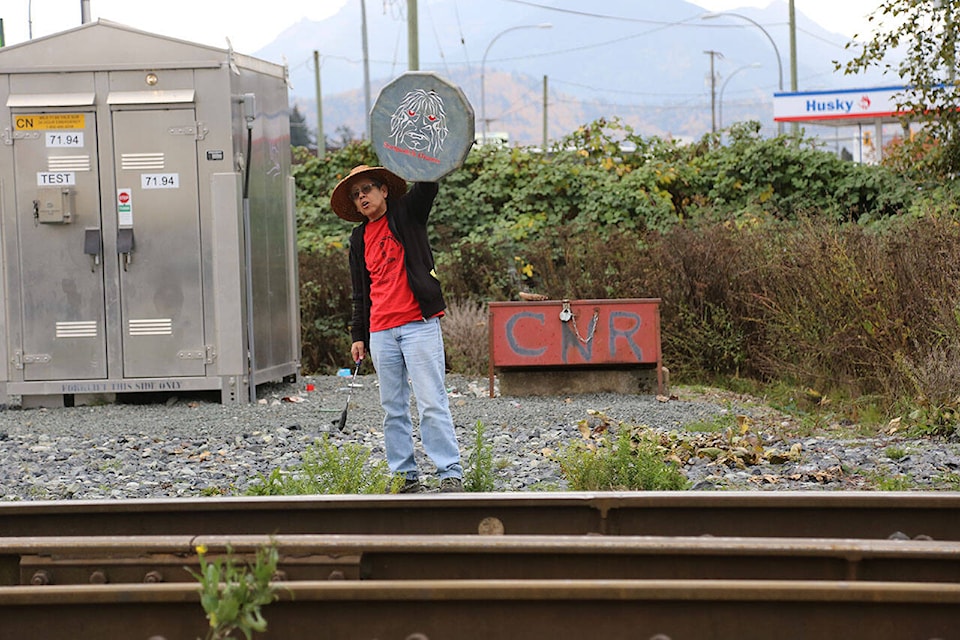My desk at The Chilliwack Progress is less than 200 metres from the CN Rail line that runs through Chilliwack.
We can hear the train from our office but rarely notice it… unless we do. Sometimes there is a long, loud horn blasting, which we take to mean the train operator is notifying people to get the heck off the tracks.
When I first came to town in 2016, my desk at The Chilliwack Times office on Trethewey Avenue was closer, more like 20 metres from the tracks and when the horns blasted, we wondered when the engine might come crashing through our walls.
The railroad has a long and storied history in Canada, a country so massive it was bound together by rails and ties long before pavement and highways.
There are 15 CN rail crossings in Chilliwack where local drivers, cyclists, and pedestrians pass over train track. The four most dangerous level rail crossings are the ones at Broadway Avenue, Young Road, Eagle Landing Parkway, and Lickman Road, in the core of the city.
Close calls, accidental deaths, and suicides are all-too common at all four of these locations. At Eagle Landing there are at least three makeshift memorials to individuals who lost their lives in recent years.
There was the tragic case of wheelchair-bound Matthew Jarvis, whose wheels got stuck in the tracks at Broadway before he was struck and killed by a CN freight train on May 26, 2018. Julie Callaghan, who suffered a serious life-altering hand injury while trying to save Jarvis, was recognized with a medal of heroism.
Two years before that, on May 3, 2016, 38-year-old Thomas Hudson stepped in front of a train at the Young Road rail crossing, instantly ending decades of pain while causing more for those he left behind. A year after Hudson’s death, we reported on his partner Patty Musgrave’s response to the suicide. She said she wasn’t angry at him.
READ MORE: Fatal railway crossing accident in Chilliwack highlights risks for people in wheelchairs: TSB report
READ MORE: Man who committed suicide at Chilliwack rail crossing remembered one year later
“His own pain would not stop and he did the one thing that would make it OK,” she said.
Two weeks ago, a 25-year-old man was killed by a train at Lickman. We have not reported the name of the young man out of respect for the family. I reached out to his mother to see if she wanted to talk about the reported fact that he looked for help earlier that day at the hospital, even threatening to step in front of a train.
Trains run through cities across Canada, but according to data (that is getting stale and isn’t being updated), the City of Chilliwack has more high-risk rail crossings than any other community in B.C. and has the 13th highest number in all of Canada.
According to a Transport Canada database of Canada’s 500 “highest risk” crossings from 2014, seven were in Chilliwack. Tops on the list of Chilliwack’s most high risk is the Young Road crossing, 49 out of 500.
There are approximately 40-to-50 suicides on average annually committed on railway rights of way, according to data from a railway suicide prevention organization created at L’Université du Québec à Montréal.
For every suicide, there are at least six individuals confronted with potentially traumatic situations: engineers/conductors, police officers, first responders, rail staff, and witnesses.
Tommy Hudson’s family reached out to the conductor of the CN train that killed him in 2016 to let them know that it was not the conductor’s fault. These incidents can have traumatic impacts on train workers who can do little to prevent accidents and suicides. And after the fact, they have to drive by the same spot over and over again.
This is not a story about railway crossings, it’s a story about mental health. Many rail crossings have improved in Chilliwack, but if someone wants to step in front of a train to end their pain, there is nothing to stop them at most places.
Those suffering in acute mental health crisis need a place to go right away, something like an emergency room.
And we cannot ignore the trauma put on rail workers who can do nothing to avoid people on the tracks.
“Having a hand in someone’s death, and the everlasting effects that come with it, is the last thing on your mind when you go to work in the morning,” said John, a conductor who asked to remain anonymous in a Teamsters Canada blog post.
“I still remember it like it was yesterday, probably because I think about it every day.”
Do you have something to add to this story, or something else we should report on? Email:
editor@theprogress.com
Like us on Facebook and follow us on Twitter.
